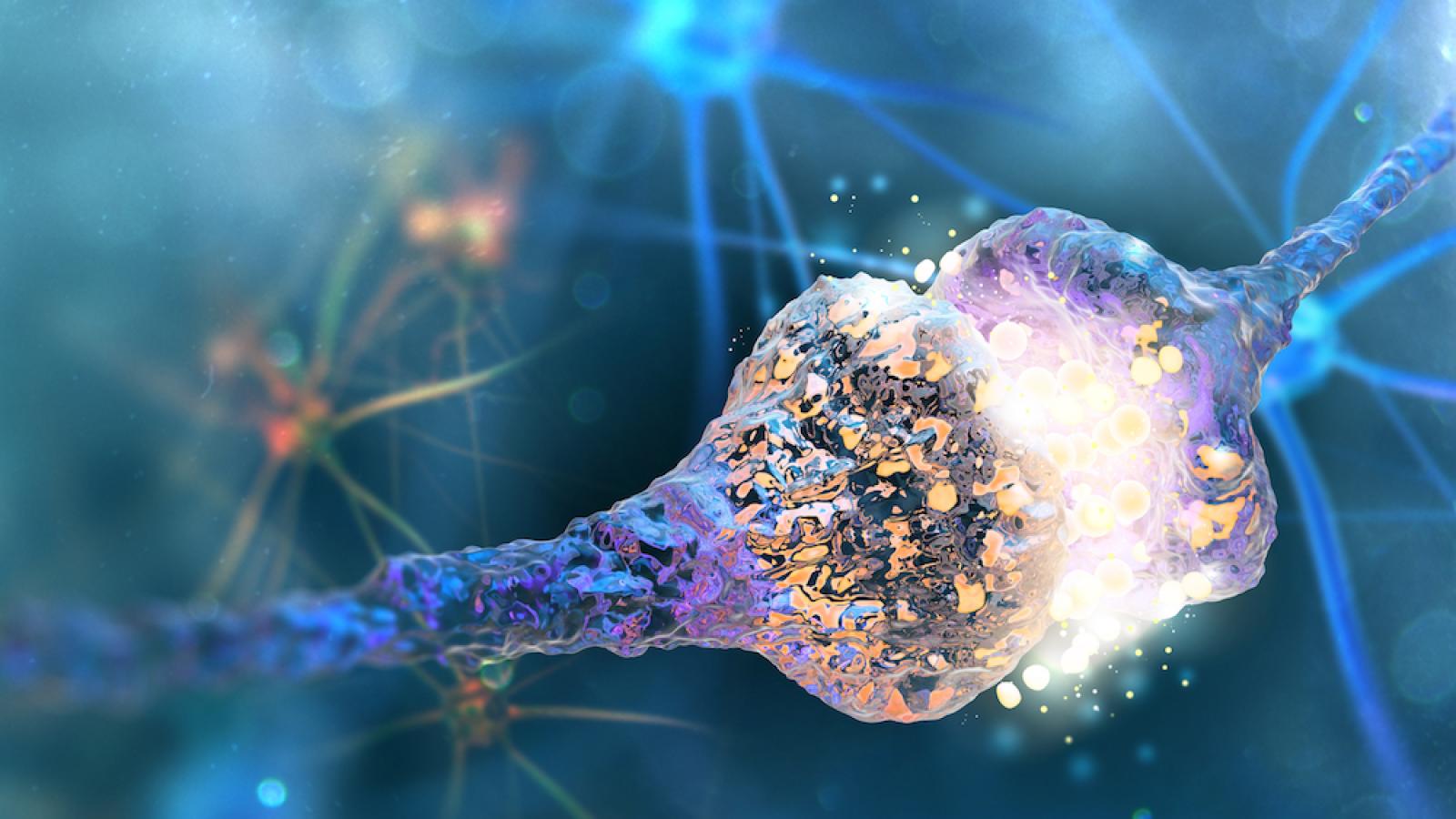Researchers led by Prof Kei Cho, UK DRI at King’s, have uncovered an important signalling pathway that links amyloid beta with disrupted neuronal communication in Alzheimer’s disease. The study, published this month in Brain Communications, identifies a potential target for disease-modifying treatments in moderate stages of the condition.
There is a large body of research literature that points to disruption of synaptic signalling in the brain as a predominant component of Alzheimer’s disease. Therapies targeting the regulation of the neurotransmitter acetylcholine have been developed but little success has been observed in slowing cognitive decline in the condition. This may partly be due to uncertainty about whether dysfunction is related to a substantial decline in numbers of synaptic receptors, their efficiency or a combition of the two.
Prof Cho and his team set out to answer to this question by examining brain tissue from individuals previously diagnosed with moderate Alzheimer’s diease. They found a remarkable reduction in the number of M1 muscarinic acetylcholine receptors (mAChRs), that play a vital role in synaptic function and neuronal communication.
To explore the mechanism behind these observatons, the group moved investigations into animal models, using a rat that is genetically altered to produce large amounts of the harmful brain protein amyloid beta - mimicking a key hallmark of the human condition. Using brain slices from the rat, they found that the high levels of amyloid beta impaired function of these M1 mAChRs, while simultaneously activating another type of synaptic receptor, metabatropic glutamate receptor 5 (mGluR5), indicating complex interactions between various types of brain receptors.
The next question was whether deactivating mGluR5 could sufficiently restore the function of M1 mAchRs. To test this theory, the team took a mouse model of Alzheimer’s disease, and administered a drug that deactivates mGluR5. They found that the drug restored object recognition memory in these mice - a sign of functional cholinergic receptors. This finding suggests that mGluR5 may be a potential therapeutic target and beneficial in treating moderate Alzheimer’s disease.
This may also explain why using acetylcholinesterase inhibitors, one of the most common therapeutic approaches in moderate stages of Alzheimer’s disease, has limited efficacy in dementia.Prof Kei ChoUK DRI at King's
On the importance of the findings, Prof Kei Cho, said:
“We believe our study is the first to describe the mechanistic framework for these effects… advancing our understanding of the importance and interplay of mGluR5. This may also explain why using acetylcholinesterase inhibitors, one of the most common therapeutic approaches in moderate stages of Alzheimer’s disease, has limited efficacy in dementia.”
Prof Cho noted that although these findings disagreed with past studies, the contrasting results are likely to be indicative of the disease mechanisms evolving as the disease progresses. In this study, the authors focused on events occurring at the moderate stages of Alzheimer’s disease, hoping the findings will have great potential to lead to a treatment that stops the disease from progressing to a more advanced stage.
Postdoctoral researcher in the lab of Prof Cho, Scott J Mitchell, added:
“Alzheimer’s disease leads to dementia with a long presymptomatic phase of the pathology. Therefore, most individuals are diagnosed in the later stages of disease. This restricts the choice of medications available, many of which have limited efficacy. It will be important to understand the early stages of pathophysiology in order to find effective therapeutic interventions for Alzheimer’s disease.”
Reference:
Article written by Annora Thoeng from UK DRI at KCL
Article published: 02 June 2020
Banner image: Andrii Vodolazhskyi/Shutterstock.com
improved in mice administered a drug that deactivates mGluR5
